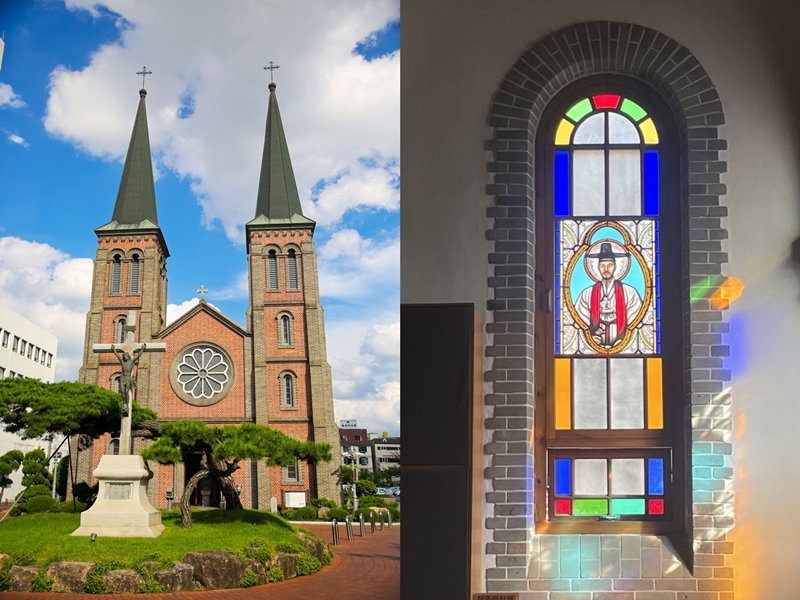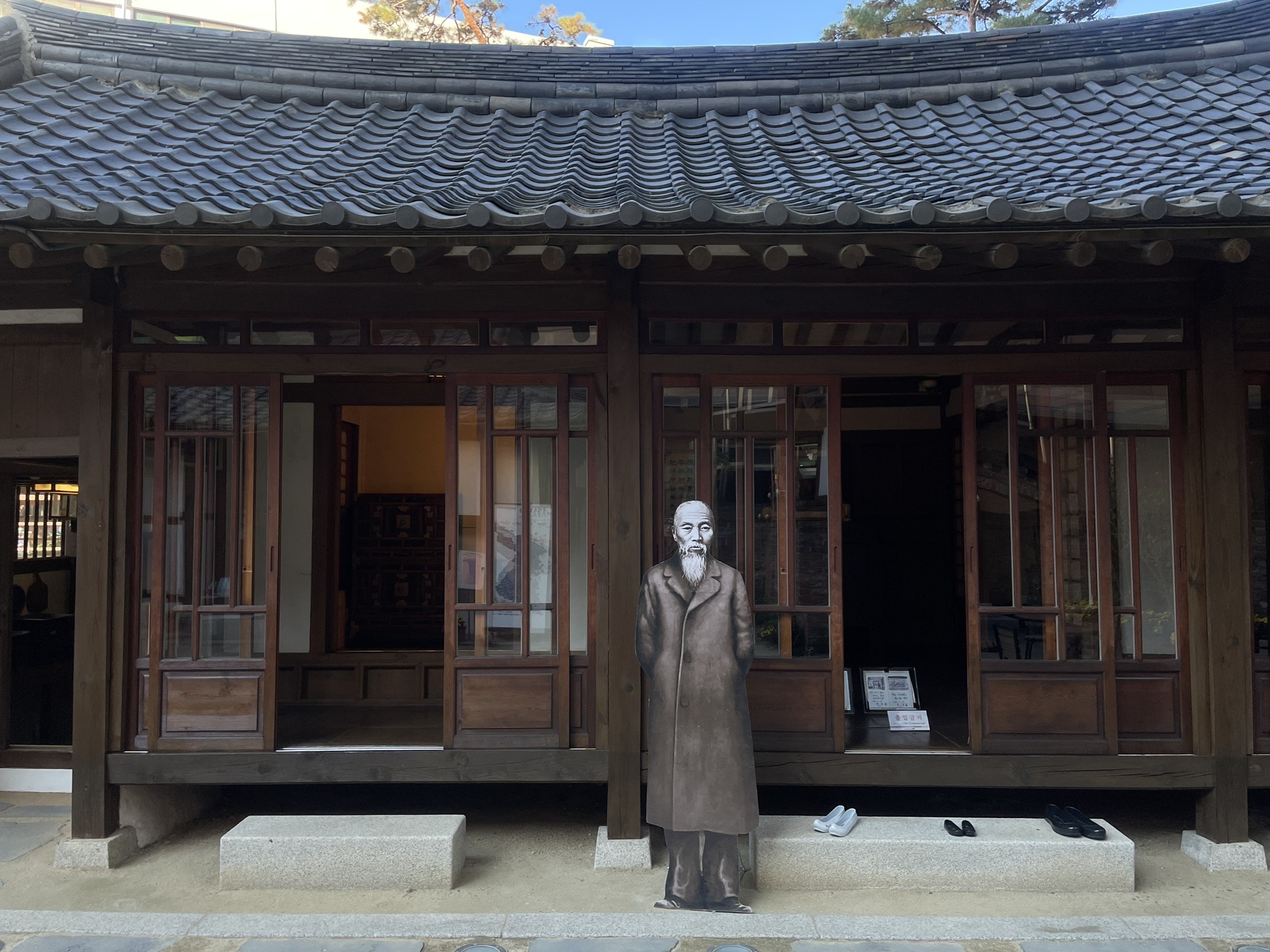March First Independence Movement Road in Daegu's Jung-gu District is where students on March 1, 1919, crossed to evade police surveillance on their way to protest Japanese occupation of the Korean Peninsula. (Jung-gu District Office)
By Lee Dasom
Daegu is a leading city for the country's contemporary culture and history.
The metropolis avoided damage and remained intact during the Korean War (1950-53), located just 40 km from the Nakdonggang River, which was South Korea's last defense line that was successfully defended by Republic of Korea and United Nations forces.
Modern Cultural Street in the city's Jung-gu District has clusters of buildings reflecting the nation's history from the late 19th to mid-20 century. Five street tours in the are available with commentary from guides.
Korea.net on Nov. 14 visited the Modern Cultural Street with guide Lee Young-suk. "It has an abundance of things to see in a relatively short time, so it's also popular among foreign tourists," she said, adding that the tour takes about two hours.

This is House of Missionary Chamness on Dongsan Cheongna Hill in Daegu's Jung-gu District. (Lee Dasom)
Passing by a brick gate signifying the beginning of the tour led to Dongsan Cheongna Hill. American missionaries lived here in the early 20th century due to Daegu's convenient transportation and high population density under plans to make the city a base for missionary activities.
"Houses at the time were made using American architecture using red bricks, glass and iron and ivy was piled on the roof to ward off the summer heat," Lee said. "From afar, the roof was covered with ivy and looked blue, so the hill was named Cheongna Hill since cheong means 'blue' and na means 'ivy.'"
The houses of missionary families Blair, Chamness and Switzer remain on this hill. "House of Chamness has retained its pristine form and appeared in dramas or films related to the national independence movement such as the series 'Bridal Mask,' so it's popular among visitors," the guide said.

On the left is Gyesan Cathedral in Daegu's Jung-gu District and on the right the image of St. Andrew Kim Taegon as shown on stained glass inside the facility. (Lee Dasom)
The tour passed by Dongsan Cheongna Hill and went down the stairs of March First Independence Movement Road to reach Gyesan Cathedral, the first facility of its kind using Gothic-style architecture in the Yeongnam region, an area comprising the country's provinces of Gyeongsangnam-do and Gyeongsangbuk-do and metropolitan cities of Busan, Daegu and Ulsan.
Because of rice paddies and wells nearby, the area around the cathedral had a high floating population when its construction was completed in 1902.
The left wrist bones and relics of St. Andrew Kim Taegon, Korea's first Catholic priest, are enshrined inside the cathedral. His stained glass image also decks the interior.
Saying the stained glass came from France when the cathedral was built, Lee added, "The statue of St. Mary shines in the morning and the columns inside the cathedral sparkle in five colors in the afternoon to create a beautiful scene."

This is House of Seo Sang-don, a pro-independence activist, in Daegu's Jung-gu District. (Lee Dasom)
Walking out of the cathedral and along a mural of the March First Independence Movement led to House of Seo Sang-don. Seo was a pro-independence activist who led a national movement for repaying government bonds from 1907-08 through fundraising drives.
"As the richest man in Daegu, Seo used his wealth to develop Catholicism, Daegu's economy and education," Lee said. "He also distributed his land for tenant farming so that his descendants could get rice from the farmers every year and live without starving."
Other highlights of Modern Cultural Street are the independence movement road, House of Lee Sang-hwa, a poet and independence activist, and the old chapel at Jeil Church, the first church in Daegu.
Lee said, "I hope that you see modern architecture and the spirit of independence activists on this alley tour."
|
How to tour Modern Cultural Street
|
dlektha0319@korea.kr